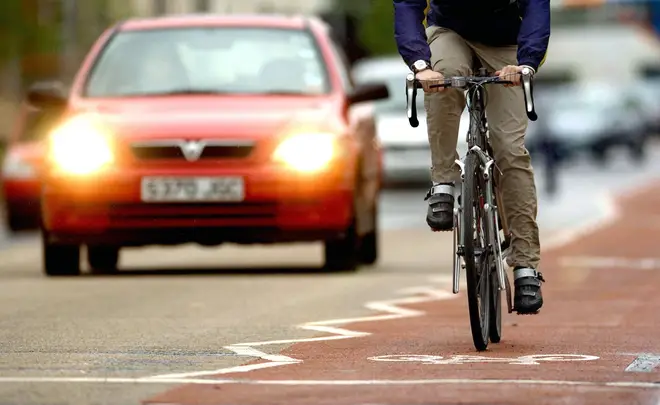
Ian Payne 4am - 7am
26 January 2022, 17:36

The Highway Code is set to change significantly in the coming days. Find out everything you need to know here.
1. New safety hierarchy
The introduction section of The Highway Code will be updated to include new rules about the new ‘hierarchy of road users’.
2. Changes at junctions
3. Walking, cycling or riding
People cycling, riding a horse or driving a horse-drawn vehicle should respect the safety pedestrians, but people walking should also take care not to obstruct or endanger them.
Cyclists should
4. Cyclists' position on roads
Cycling in groups
Cyclists passing parked vehicles
5. Overtaking when driving or cycling
Drivers can cross a double-white line if necessary (provided the road is clear) to overtake someone cycling or riding a horse if they are travelling at 10 mph or less.
When overtaking vulnerable road users, drivers and bikers should:
Cyclists passing slower-moving or stationary traffic
People cycling can pass slower-moving or stationary traffic on their right or left.They should proceed with caution as people driving may not be able to see them. This is particularly important:
6. Cyclists at junctions
Cyclists should give way to people walking who are crossing or waiting to cross.
Some junctions now include small traffic lights for cyclists at eye-level height, which may allow cyclists to move separately from or before other traffic.
Cyclists are encouraged to use these facilities where they make their journey safer and easier.
At other junctions, cyclists should proceed as if they were driving a vehicle where there are no separate cyclist facilities. This includes positioning themselves in the centre of their chosen lane, where they feel able to do this safely.
This is to:
Cyclists turning right
Some junctions will have signs and markings telling them to turn right in 2 stages. These are:
Cyclists have priority when going straight ahead at junctions
The code will clarify that when cyclists are going straight ahead at a junction, they have priority over traffic waiting to turn into or out of a side road, unless road signs or markings indicate otherwise.
Cyclists are asked to watch out for drivers intending to turn across their path, as people driving ahead may not be able to see them.
7. People cycling, riding a horse and driving horse-drawn vehicles on roundabouts
Drivers and bikers should give priority to people cycling on roundabouts.
The new guidance will say people driving and or riding a motorcycle should:
The code already explains that people cycling, riding a horse and driving a horse-drawn vehicle may stay in the left-hand lane of a roundabout when they intend to continue across or around the roundabout.
Guidance will be added to explain that drivers should take extra care when entering a roundabout to make sure they do not cut across cyclists, horse-riders or people driving a horse-drawn vehicle who are continuing around the roundabout in the left-hand lane.
8. Parking, charging and leaving vehicles
Drivers leaving vehicles will be asked to do a move called the 'Dutch reach' - reaching with their hand furthest from the door to make their torso and head turn so they can look out for cyclists.
Using an electric vehicle charge point
When charging an electric vehicle, drivers should:
The changes will come into effect from Saturday 29th January 2022 if approved by parliament.